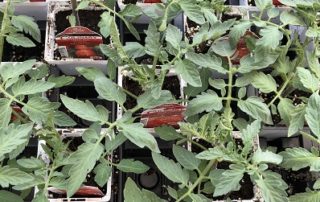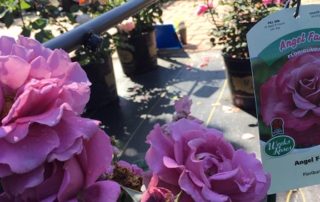A – JANUARY GARDENING CHECKLIST
ANNUALS AND PERENNIALS: Continue watering and fertilizing cool-season annuals to ensure productive flowering. Use NutriStar Color Star time-release fertilizer once a month for continuous feeding. Pansies are particularly heavy-feeders, and will always respond to fertilization with added blooms. Continue planting pansies, violas, ornamental cabbage and kale, snapdragons, dusty miller and cyclamen (protect cyclamen from freezes). VEGETABLES: If you plan on growing transplants for spring planting, count back 6-8 weeks from the last average frost date to start tomato and pepper seedlings. This is early to mid-January in Central Texas. Place [...]
B – February Gardening Checklist
VEGETABLES Onions transplants should be planted before mid-month. Click HERE for planting instructions. Seed Swiss chard, carrots, turnips and radishes directly into the garden. Cover seedlings during hard freezes. Cool-season greens such as lettuce, spinach, mesclun greens and mustard greens should be planted early in the month from seed. Potatoes are usually planted around President’s Day. Choose varieties such as Kennebec or Red Lasoda. Cut seed potatoes into sections with at least one “eye” per section. Lay them out to dry in a shady spot. Shaking them in a bag [...]
C – March Gardening Checklist
Annuals and Perennials Now is the time to plant warm season annuals and perennials. Their root systems will have a chance to become established before the summer heat sets in, and hand watering will be easier when temperatures are cooler. Be ready to protect your newly planted/tender plants with frost cloth just in case we get a late freeze. The average last frost in Burnet County is March 15. Some of my favorite plants to add instant color to the winter-worn landscape or to your containers are marigolds, geraniums, [...]
D – April Checklist
ANNUALS AND PERENNIALS: Continue planting warm season annuals and perennials. Work compost into the beds before planting and apply fertilizer such as MicroLife 6-2-4 or 8-4-6 after planting. Water the planting in well. Add large colorful pots of combination plantings to your landscape. Be sure to include tall, medium and trailing plants- also known as “the thriller, the filler and the spiller”!!! Check for insects such as Aphids, Caterpillars and Mealybugs regularly. Use Safer Insecticidal Soap, Spinosad Soap or Captain Jack’s Dead-bug Brew as organic options, or consult out staff for [...]
E – May Gardening Checklist
Annuals and Perennials: Remove spent blooms on annuals such as Zinnias, snipping the bloom back to just above the first set of leaves. This process is known as “deadheading”, and if done as soon as blooms begin to fade will encourage repeat blooming. Deadhead Geraniums by bending the flower stalk away from the stem it is growing on. If you have your Geraniums in the sun, it is time to move them to afternoon shade. They will continue blooming all summer if given some shade, occasional pruning and monthly [...]
F – June Gardening Checklist
Annuals and Perennials: Some of the best heat-loving annuals are ready to be planted now! Vinca, Angelonia, Penta, Sweet Potato Vine, Coleus, Wax Begonias, Purslane and Portulaca will easily make it through our hot summer with attentive watering and monthly fertilization. Even Geraniums, when moved to dappled shade or part sun will produce abundant blooms all summer if deadheaded and fertilized monthly. Perennials should be establishing well if planted in the spring. If planting now, continue hand-watering daily for several weeks. Watering [...]






